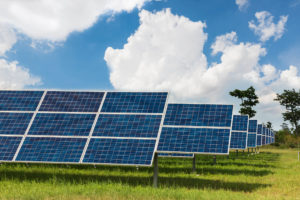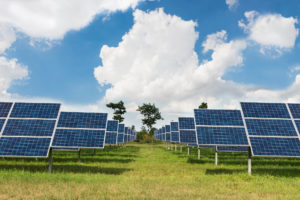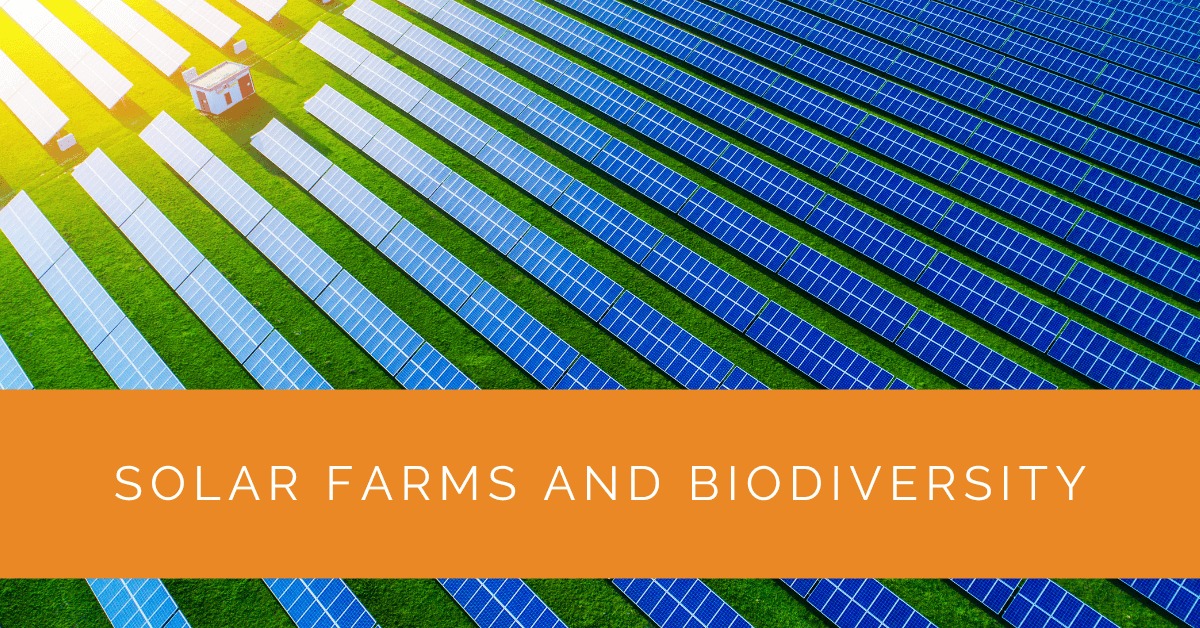Solar farms have emerged as a crucial player in the shift towards renewable energy, harnessing the power of the sun to generate clean electricity. However, as we embrace the benefits of solar energy, it is essential to consider its impact on biodiversity. This article delves into the relationship between solar farms and biodiversity, exploring ways to harmonize energy production with conservation efforts for a sustainable future.
Contents
- 1 Key Takeaways
- 2 Biodiversity on Solar Farms
- 3 Designing Solar Farms with Biodiversity in Mind
- 4 Mitigating Risks and Challenges
- 5 Partnerships and Community Engagement
- 6 Measuring Success and Continuous Improvement
- 7 Expert Quotes from Solar Panel Installers and Biodiversity Experts
- 8 Experience Solar Excellence with Us!
- 9 Conclusion
Key Takeaways
- Solar farms have the potential to support biodiversity and conservation efforts when thoughtfully designed and managed.
- Integrating native vegetation, agrovoltaics, and wildlife-friendly features can enhance solar farms’ positive impact on local ecosystems.
- Collaborating with conservation experts, engaging local communities, and monitoring results are essential for continuously improving biodiversity initiatives on solar farms.
Biodiversity on Solar Farms
Exploring the Potential Impact of Solar Farms on Local Biodiversity
When transforming large areas into solar farms, concerns about potential disruptions to local ecosystems exist. The construction and operation of solar farms can lead to habitat loss, affecting various plant and animal species. Understanding the scope of these impacts is crucial in developing strategies to support biodiversity alongside solar power generation.
Benefits of Solar Farms as Wildlife Habitats
Contrary to their initial perception of ecological disruptions, solar farms can offer unexpected benefits for wildlife. Managed properly, solar farms can create new habitats that support biodiversity. Open areas between solar panels allow ground-nesting birds and small mammals to thrive, while certain plant species can flourish due to increased sunlight.
Case Studies Highlighting Biodiversity Successes on Solar Farms
Several solar farms have exemplified successful coexistence with biodiversity. By adopting sustainable practices and incorporating wildlife-friendly features into the solar farm design, these projects have supported and even enhanced local biodiversity. Such examples demonstrate that solar farms can become sanctuaries for wildlife while producing renewable energy.

Designing Solar Farms with Biodiversity in Mind
Incorporating Biodiversity into Solar Farm Planning and Layout
It is essential to integrate biodiversity considerations from the outset of solar farm planning to balance solar energy production and biodiversity conservation. Site selection, design, and layout are critical in minimizing negative impacts on ecosystems and maximizing positive contributions to biodiversity.
Utilizing Agrovoltaics and Dual-Use Landscapes for Enhanced Biodiversity
Agrovoltaics, combining solar energy production with agriculture, presents an innovative approach to supporting biodiversity. By integrating solar panels above grazing land, wildflowers, or crops, solar farms can become multifunctional spaces that benefit energy production and local ecosystems. Grazing livestock can create diverse habitats, pollinators are attracted to wildflowers, and the microclimate beneath the solar panels can offer refuge to certain species.
Native Plant Selection and Habitats Creation to Support Local Wildlife
Planting native vegetation on solar farms is pivotal in creating habitats that support local wildlife. Native wildflowers, for instance, provide resources for pollinators and other insects. Furthermore, creating ponds and wetland areas can attract amphibians and provide breeding grounds. We can enhance biodiversity by thoughtfully designing solar farm landscapes while generating renewable energy.
Mitigating Risks and Challenges
Identifying Potential Risks to Biodiversity on Solar Farms
Understanding the specific risks that solar farms pose to biodiversity is crucial in developing effective mitigation strategies. These risks may include habitat fragmentation, increased predation, and disturbances during installation and maintenance activities.
Implementing Measures to Prevent Wildlife Harm and Disruption
Proactive measures can be taken to prevent harm to wildlife during the construction and operation of solar farms. Implementing strict guidelines for construction activities, such as limiting noise and disturbances during sensitive periods, helps protect wildlife populations in the vicinity.
Addressing Concerns of Habitat Fragmentation and Migration Routes
Habitat fragmentation resulting from solar farm development can hinder the movement and migration of certain species. By identifying and preserving critical wildlife corridors, we can maintain connectivity between habitats and ensure the long-term viability of local biodiversity.

Partnerships and Community Engagement
Collaborating with Conservation Organizations and Experts
Collaborating with conservation organizations and biodiversity experts can provide valuable insights and guidance in designing biodiversity-friendly solar farms. These partnerships foster a deeper understanding of local ecosystems and ensure that conservation efforts are well-informed and effective.
Involving Local Communities in Biodiversity Initiatives
Engaging with local communities is essential in promoting biodiversity on solar farms. Educational programs, citizen science initiatives, and involvement in conservation efforts foster a sense of ownership and responsibility, ensuring sustainable practices are maintained over time.
Enhancing Public Awareness and Education on Solar Farms and Biodiversity
Raising public awareness about the relationship between solar farms and biodiversity is essential. Transparent communication about the efforts to support wildlife and the ecological benefits of solar farms can garner public support and appreciation for these dual-purpose installations.
Measuring Success and Continuous Improvement
Monitoring Biodiversity Performance on Solar Farms
Regular monitoring and data collection are vital in assessing the impact of solar farms on biodiversity. By monitoring wildlife populations and plant communities, we can evaluate conservation strategies’ effectiveness and identify improvement areas.
Evaluating the Effectiveness of Conservation Efforts
As solar farm biodiversity initiatives progress, it is essential to evaluate their success. Measuring the positive outcomes of biodiversity-friendly practices can provide valuable insights for refining future projects and industry-wide best practices.
Adapting and Improving Biodiversity Strategies over Time
The journey towards sustainability is an ongoing process. By learning from experiences, staying receptive to new research, and continually improving conservation strategies, solar farms can continue to support biodiversity and renewable energy generation in harmony.
Expert Quotes from Solar Panel Installers and Biodiversity Experts
Solar farms can become havens for biodiversity when designed with nature in mind. By integrating native plants and creating habitats for wildlife, we can enhance local ecosystems while generating clean energy.
Renewable Energy Specialist
The synergy between solar farms and biodiversity is profound. Properly managed solar farms can support a variety of species, from pollinators to ground-nesting birds, contributing to broader conservation goals.
Conservation Biologist
Involving local communities in biodiversity initiatives on solar farms not only boosts ecological benefits but also fosters a sense of stewardship and pride among residents. It’s a win-win for sustainability.
Solar Project Manager
Experience Solar Excellence with Us!
Trust in Solar Panels Network USA, where our seasoned experts deliver top-quality solar solutions for homes and businesses nationwide. With a legacy of countless successful installations and a commitment to sustainable energy, we’re your reliable partner in the solar journey. Ready for a brighter, eco-friendly future? Call us now at (855) 427-0058 and harness the power of the sun!
Conclusion
Striking a balance between solar farms and biodiversity is paramount in building a sustainable future. By designing solar farms with biodiversity in mind, implementing mitigation measures, and fostering community engagement, we can create solar energy installations that reduce our carbon footprint and support the intricate web of life on our planet. As the renewable energy sector continues to grow, embracing the coexistence of solar farms and biodiversity is a testament to our commitment to a greener and more harmonious world.
About the Author
Solar Panels Network USA stands at the forefront of solar energy solutions, driven by a team of seasoned solar engineers and energy consultants. With over decades of experience in delivering high-quality solar installations and maintenance, we are committed to promoting sustainable energy through customer-centric, tailored solutions. Our articles reflect this commitment, crafted collaboratively by experts to provide accurate, up-to-date insights into solar technology, ensuring our readers are well-informed and empowered in their solar energy decisions.

